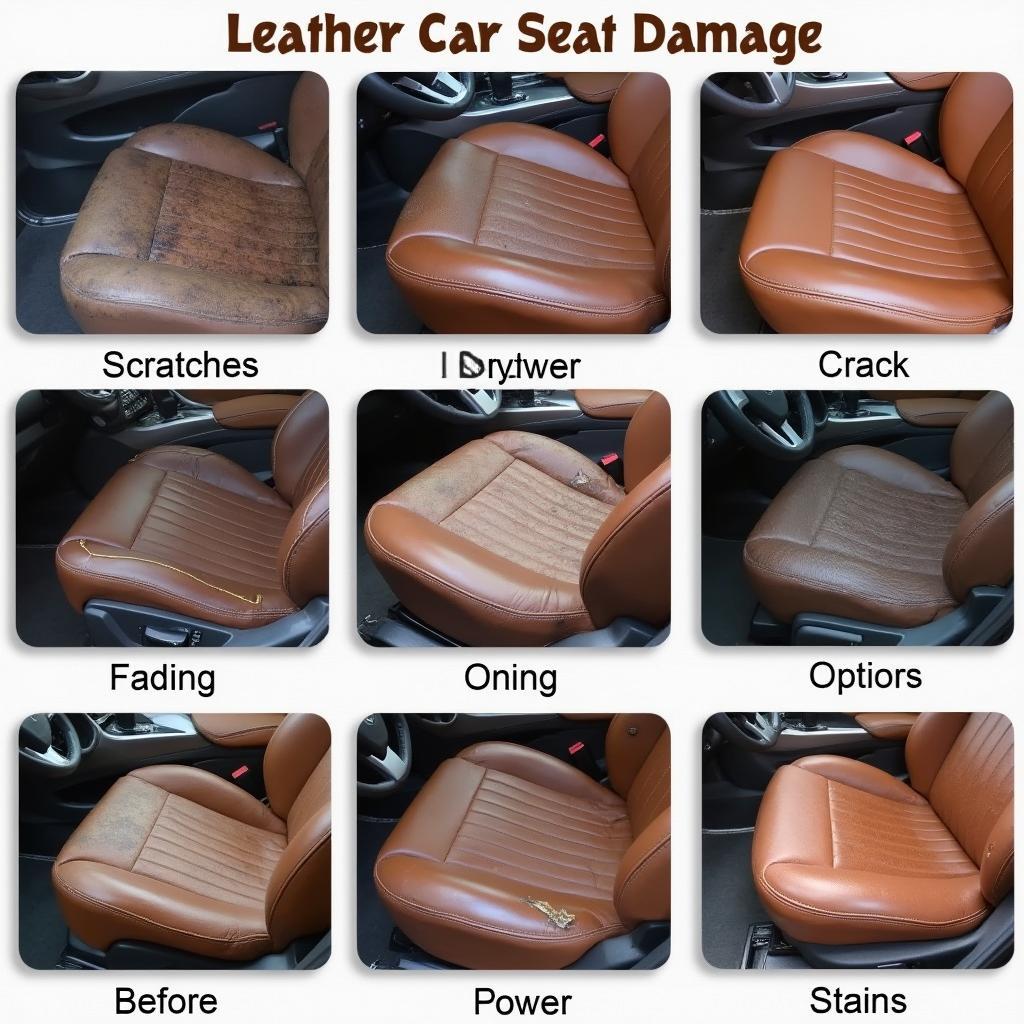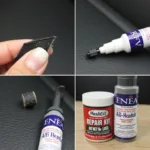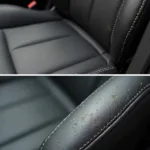Leather car seats exude a sense of luxury and sophistication, but over time, they can suffer from wear and tear, scratches, and fading. Fortunately, with the right repair kit leather car seat, you can restore their former glory and breathe new life into your car’s interior. This comprehensive guide will delve into everything you need to know about leather car seat repair kits, empowering you to make informed decisions and achieve professional-looking results.
Understanding Leather Car Seat Damage
Before diving into the specifics of repair kits, it’s crucial to identify the type of damage your leather car seats have sustained. Common issues include:
- Scratches and Scuffs: These are superficial damages that affect the leather’s topcoat.
- Cracks and Tears: More severe damage that exposes the underlying layers of the leather.
- Fading and Discoloration: Prolonged exposure to sunlight and heat can cause the leather to lose its color and vibrancy.
- Stains and Spills: Liquids and other substances can penetrate the leather, leaving unsightly marks.
Choosing the Right Repair Kit Leather Car Seat
Selecting the appropriate repair kit is paramount for achieving optimal results. Consider the following factors:
- Type of Damage: Different kits cater to specific types of damage. Ensure the kit you choose addresses the specific issues your seats have.
- Leather Type: Leather car seats come in various finishes, such as pigmented, aniline, and semi-aniline. Choose a kit compatible with your leather type.
- Color Matching: If dealing with scratches, cracks, or fading, opt for a kit that offers a close color match to your leather’s original shade.
- Kit Contents: Repair kits typically include various tools and materials, such as cleaners, conditioners, fillers, dyes, and applicators. Evaluate the kit’s contents to ensure it meets your needs.
Step-by-Step Guide to Using a Repair Kit Leather Car Seat
Once you’ve chosen the right kit, follow these steps for a successful repair:
- Clean the Affected Area: Thoroughly clean the damaged area with a leather cleaner to remove dirt, grime, and debris.
- Repair Cracks and Tears: For cracks and tears, use a leather filler to fill in the gaps and create a smooth surface. Allow the filler to dry completely.
- Sand and Smooth: Once the filler is dry, sand the area with fine-grit sandpaper to level it with the surrounding leather.
- Apply Leather Dye (if necessary): If the damage is significant or has caused discoloration, apply a leather dye that matches your seat’s color.
- Apply Leather Conditioner: After the dye has dried, apply a leather conditioner to restore the leather’s moisture and suppleness.
Tips for Maintaining Repaired Leather Car Seats
To prolong the lifespan of your repaired leather car seats and prevent future damage, consider these maintenance tips:
- Regular Cleaning: Regularly clean your seats with a leather cleaner to remove dirt and grime that can accumulate over time.
- Conditioning: Leather conditioners help to keep the leather soft, supple, and protected from drying out and cracking.
- UV Protection: Prolonged exposure to sunlight can cause fading and damage. Park your car in the shade or use a sunshade to protect your seats.
FAQs about Repair Kit Leather Car Seat
Can I repair deep scratches with a repair kit?
Yes, repair kits can effectively address deep scratches. However, for severe damage, it’s best to consult a professional.
How long does it take for the leather dye to dry?
Drying times vary depending on the type of dye used. Refer to the manufacturer’s instructions for specific drying times.
Can I use a repair kit on vinyl car seats?
No, leather repair kits are specifically designed for leather and may not be suitable for vinyl seats. Check out our guide on “how to repair vinyl seats in car” for more information.
How often should I condition my leather car seats?
It’s recommended to condition your leather car seats every three to six months, or more frequently if they are exposed to extreme temperatures or sunlight.
Can I repair a tear in my Mercedes-Benz car seat with a repair kit?
Yes, repair kits can be used to repair tears in Mercedes-Benz car seats. However, due to the specific leather types used in these vehicles, it’s crucial to choose a compatible kit. Learn more about “how to repair tear in mb car seat” in our dedicated article.
Conclusion
A repair kit leather car seat can be a valuable investment for car owners looking to restore their leather seats’ beauty and extend their lifespan. By understanding the different types of damage, choosing the right kit, and following proper application techniques, you can achieve professional-looking results and keep your car’s interior looking its best.
Need help with car seat upholstery repair? Check out our comprehensive guide on “car seat upholstery repair” for expert tips and tricks. For those wondering, “can a leather car seat be repaired?” – the answer is often yes, and we have a dedicated article to guide you through the process. And if you’re dealing with tears in cloth car seats, our guide on “how to repair a cloth car seat tear” can provide valuable insights.
For expert assistance and personalized guidance, reach out to our dedicated team via WhatsApp at +1(641)206-8880 or email us at [email protected]. We’re available 24/7 to address your car repair needs.



